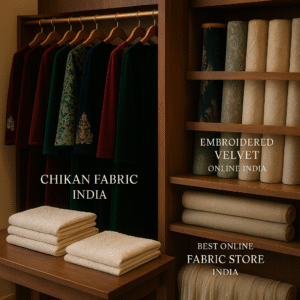In the world of manufacturing, precision is everything. Whether you’re producing automotive parts, aerospace components, or large industrial machinery, ensuring that every part fits perfectly is key to producing high-quality products. This is where the laser tracking system comes into play. Laser tracking technology has become a game-changer for manufacturers seeking high-accuracy measurements and seamless operations.
If you haven’t yet explored how a laser tracking system can revolutionize your manufacturing processes, let’s dive into the numerous benefits it offers.
What is a Laser Tracking System?
A laser tracking system is a sophisticated tool used to measure the precise 3D coordinates of a target point in space. It works by emitting a laser beam that bounces off a retro-reflective target. The tracker then calculates the distance and position of the target, allowing manufacturers to collect incredibly accurate data on the dimensions and alignment of large components.
In manufacturing, laser tracking is used for tasks like alignment, quality control, reverse engineering, and assembly verification. It allows you to measure parts and assemblies that are too large for conventional measuring tools, offering high precision and versatility.
Why Should Manufacturers Consider Using Laser Tracking Systems?
For manufacturers, adopting laser tracking systems means improving product quality, reducing production time, and boosting overall efficiency. Let’s explore the top benefits of incorporating laser tracking technology into your operations.
1. High Accuracy and Precision
The most obvious benefit of using a laser tracking system is its exceptional accuracy. These systems can measure parts with micrometer-level precision, ensuring that every component fits together perfectly. This is crucial in industries like aerospace, automotive, and electronics, where even the smallest misalignment can lead to significant problems.
Laser trackers can provide real-time measurements of up to 0.01mm, enabling manufacturers to meet the most stringent tolerances and ensuring that products are defect-free.
2. Improved Quality Control
Quality control is essential for any manufacturing operation. Laser tracking systems enable real-time monitoring of production processes, allowing you to detect defects or misalignments as soon as they occur. This early detection helps prevent issues from snowballing into costly rework or product failures.
By automating measurements and aligning components with precision, laser tracking systems reduce human error and ensure consistent, high-quality products every time.
3. Faster Measurements and Increased Efficiency
Traditional measurement methods can be time-consuming and prone to error. Manual measurements often require multiple tools, labor, and time, leading to delays and inefficiencies in production. Laser tracking systems streamline this process by quickly measuring large or complex parts in just a few seconds.
Speed is a critical advantage in manufacturing. Laser trackers significantly reduce the time required for inspections and adjustments, leading to faster production cycles and quicker turnaround times. This increased efficiency helps companies meet tight deadlines and enhance overall productivity.
4. Ability to Measure Large Objects
One of the biggest challenges in manufacturing is measuring large and heavy components that cannot be easily moved. Conventional measuring tools are often not designed to handle these large-scale parts. However, a laser tracking system can measure components that are hundreds of meters in size, making it ideal for industries dealing with large objects, such as shipbuilding, aerospace, and heavy machinery manufacturing.
With the ability to capture measurements over a vast area, laser trackers make it possible to work on large projects without compromising on accuracy.
5. Flexibility and Versatility
Laser tracking systems are incredibly versatile and adaptable to various applications in manufacturing. Whether you need to align complex assemblies, inspect parts, or perform detailed measurements on prototype models, a laser tracker can be customized for your specific needs.
These systems are also portable, allowing you to move them around the factory floor or even take them on-site for inspections, ensuring that your operations can be more flexible and responsive.
For example, if you’re in the aerospace industry, laser tracking can help with measuring fuselage alignments, while in automotive manufacturing, it can be used for precision inspection of parts and subassemblies.
6. Real-Time Data Collection and Analysis
One of the standout features of modern laser tracking systems is their ability to collect real-time data. As the system measures, it continuously provides feedback on the accuracy and alignment of parts. This data can be integrated with your manufacturing execution systems (MES), allowing you to monitor progress, track deviations, and make instant adjustments during the production process.
With this instant feedback, you can ensure that each component is aligned correctly before it proceeds to the next stage, preventing costly mistakes later on.
7. Reduced Human Labor and Increased Safety
Although human workers are essential to the manufacturing process, repetitive tasks such as measuring and aligning components can lead to fatigue and error. Laser tracking systems help alleviate these concerns by automating measurement tasks, reducing the need for manual intervention.
By automating these processes, you not only increase efficiency but also improve safety. Workers can focus on more complex tasks that require problem-solving and creativity, while the laser tracker handles the repetitive measuring and alignment tasks.
Additionally, by taking over dangerous tasks such as measuring large, heavy, or complex parts, laser tracking systems contribute to workplace safety by minimizing human exposure to potentially hazardous conditions.
8. Cost Savings Over Time
While the initial investment in a laser tracking system may seem significant, the long-term cost savings are substantial. By improving measurement accuracy, reducing errors, and speeding up production cycles, these systems can significantly lower production costs.
Laser tracking also helps reduce material waste by identifying alignment issues before they escalate, and it minimizes the need for rework, which can be costly and time-consuming. Over time, these cost savings quickly justify the investment.
9. Enhanced Collaboration Across Teams
In manufacturing, collaboration between design, engineering, and production teams is essential for creating high-quality products. Laser tracking systems help improve collaboration by providing shared, accurate data that all teams can use.
For example, the engineering team can use the real-time data from the laser tracker to adjust designs, while production teams can use the same data to ensure parts are built according to specifications. This seamless communication between teams helps prevent errors, delays, and miscommunications.
10. Better Compliance and Traceability
In industries like aerospace, automotive, and medical devices, meeting regulatory standards is a crucial part of the manufacturing process. Laser tracking systems provide traceability for every measurement taken, allowing manufacturers to maintain detailed records of their production process.
This traceability ensures that all parts meet the required specifications and comply with industry standards, which is essential for audits and certifications. It also helps manufacturers avoid costly fines or legal issues associated with non-compliance.
The Future of Laser Tracking Systems in Manufacturing
The benefits of laser tracking systems are already clear, but the future promises even greater advancements. With the integration of AI, machine learning, and IoT technology, laser trackers will become even smarter, offering more predictive insights and enhancing decision-making in real-time.
As manufacturing continues to evolve, laser tracking systems will play an even greater role in improving precision, quality, and efficiency.
Conclusion: Embrace the Power of Laser Tracking Systems
As we’ve seen, laser tracking systems offer an array of benefits for manufacturers looking to boost productivity, accuracy, and overall efficiency. From improving quality control and streamlining production to reducing costs and enhancing safety, the advantages are undeniable.
If you’re looking to stay ahead of the competition and ensure that your manufacturing processes are as efficient and precise as possible, integrating a laser tracking system into your operations is a smart investment.


